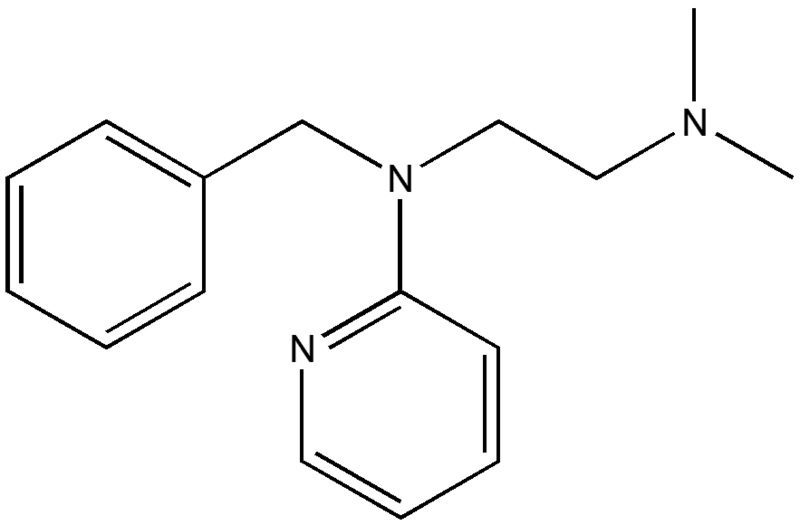Tripelennamine
 | |
| Clinical data | |
|---|---|
| ATC code | |
| Pharmacokinetic data | |
| Metabolism | Hepatic hydroxylation and glucuronidation |
| Excretion | Renal |
| Identifiers | |
| |
| CAS Number |
|
| PubChem CID | |
| DrugBank | |
| E number | {{#property:P628}} |
| ECHA InfoCard | {{#property:P2566}}Lua error in Module:EditAtWikidata at line 36: attempt to index field 'wikibase' (a nil value). |
| Chemical and physical data | |
| Formula | C16H21N3 |
| Molar mass | 255.358 g/mol |
Editor-In-Chief: C. Michael Gibson, M.S., M.D. [1]
Please Take Over This Page and Apply to be Editor-In-Chief for this topic: There can be one or more than one Editor-In-Chief. You may also apply to be an Associate Editor-In-Chief of one of the subtopics below. Please mail us [2] to indicate your interest in serving either as an Editor-In-Chief of the entire topic or as an Associate Editor-In-Chief for a subtopic. Please be sure to attach your CV and or biographical sketch.
Tripelennamine (INN, also known as pyribenzamine) is a first generation pyridine antipruritic and antihistamine in the ethylenediamine class. It can be used in the treatment of asthma, hay fever, rhinitus and urticaria but is now less common as it has been replaced by newer antihistamines. This drug is sold in 50 mg tablets, which are usually green in colour. Tripellenamine is marketed by Novartis under the trade name Pyribenzamine.
Tripelennamine was first synthesized by Carl Djerassi, working in the laboratory of Charles Huttrer at Ciba, shortly after Djerassi got his BS. It was his first patent.
Side effects
Tripelennamine is mildly sedating. Other side effects can include gastrointestinal irritation, dry mouth, nausea, and dizziness.
Recreational use
Tripelennamine is sometimes abused recreationally in combination with the opiate pentazocine ("T's & Blues"), morphine ("Blue Velvet") and narcotic cough syrups. It is dangerous to combine an opiate with a sedating antihistamine via injection, although the use of antihistamines (usually by mouth) to reduce opioid requirements for pain relief is a well-known practice, which is done under medical supervision with tripelennamine, as well as hydroxyzine, cyclizine, promethazine, diphenhydramine, phenindamine, and cyproheptadine.
- Pages with script errors
- E number from Wikidata
- ECHA InfoCard ID from Wikidata
- Articles without EBI source
- Chemical pages without ChemSpiderID
- Articles without KEGG source
- Articles without InChI source
- Articles without UNII source
- Drugs with no legal status
- Articles containing unverified chemical infoboxes
- H1 receptor antagonists